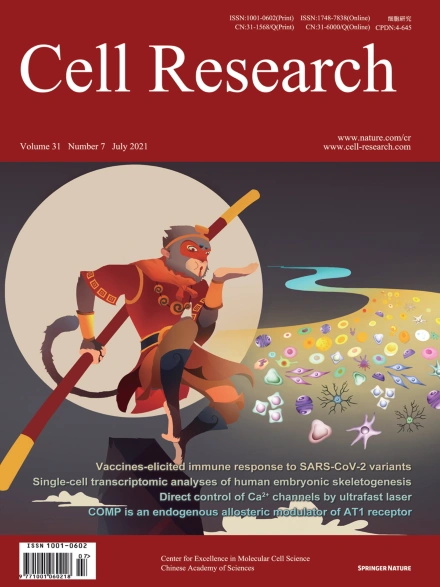
Advanced Search
Submit Manuscript
Advanced Search
Submit Manuscript
Volume 31, No 7, Jul 2021
ISSN: 1001-0602
EISSN: 1748-7838 2018
impact factor 17.848*
(Clarivate Analytics, 2019)
Volume 31 Issue 7, July 2021: 821-824
Solution structure of the voltage-gated Tim23 channel in complex with a mitochondrial presequence peptide
Shu Zhou1,2,* , Maosen Ruan1,2 , Yunyan Li1 , Jing Yang1 , Suwen Bai3 , Christian Richter4 , Harald Schwalbe4 , Can Xie1,2 , Bing Shen3,* , Junfeng Wang1,2,5,*
1High Magnetic Field Laboratory, CAS Key Laboratory of High Magnetic Field and Ion Beam Physical Biology, Hefei Institutes of Physical Science, Chinese Academy of Sciences, Hefei, Anhui 230031, ChinaDear Editor,
Most mitochondrial proteins are synthesized in the cytosol and transported into various mitochondrial subcompartments in a process that is mediated by intricate multimeric machineries. Tim23, the key component of the TIM23 complex forming a channel in the mitochondrial inner membrane (MIM), is believed to recognize and translocate precursor proteins into the mitochondrial matrix or to release them into the MIM.1 Previous study has demonstrated that purified Tim23 forms a protein-conducting channel that can be activated by an appropriate change in the membrane potential in the presence of a mimetic mitochondrial preprotein,2 a signaling peptide corresponding to the presequence of cytochrome c oxidase subunit IV (denoted as pCoxIV, primary sequence: MLSLRQSIRFFKPATRTLCSSRYLL). Here, we present the three-dimensional (3D) solution structure of the yeast Tim23 channel in complex with pCoxIV in micelles as determined by high-resolution nuclear magnetic resonance (NMR), providing structural insight into the molecular mechanism of presequence translocation.
https://doi.org/10.1038/s41422-020-00452-y